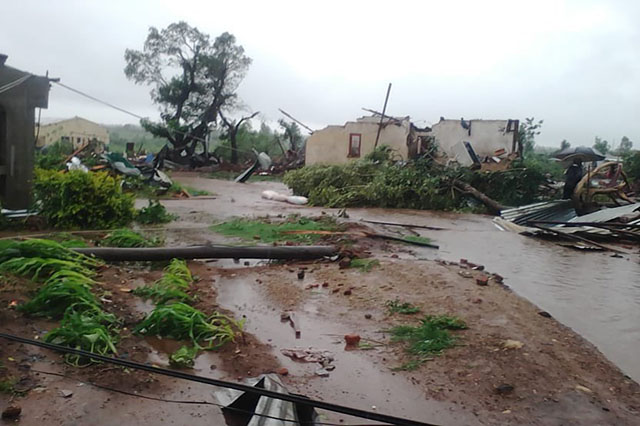Antananarivo – Cyclone Emnati overnight lashed the island nation of Madagascar, still reeling from the impact of another cyclone earlier this month, local authorities said Wednesday.
The cyclone “made landfall around 2300 GMT just north of the southeastern district of Manakara,” Faly Aritiana Fabien, a senior official of the National Risk Management Office (BNGRC) told AFP. No casualties have been reported yet.
The storm, which passed just north of Indian Ocean islands of Mauritius and Reunion, had weakened slightly by the time it reached the eastern coast of Madagascar, but was still packing winds of around 100km (60 miles) per hour and gusts of 140 km/h, according to Meteo-France.
ALSO READ | UN says ‘race against time’ as new storm nears Madagascar
The cyclone is forecast to exit Madagascar Wednesday night, but authorities are warning of torrential rains.
National Weather forecaster, Meteo-Madagascar warned of strong gusts, heavy rain and widespread flooding around the southern and southeastern districts.
UN agencies had on Tuesday said they were preparing “for the worst”.
Another storm, Cyclone Batsirai struck the island on February 5, affecting some 270 000 people and claiming 121 lives.
At the same time, some 21 000 people still remain displaced from when tropical storm Ana struck in late January.
Tropical storm Ana has left at least 36 people in Madagascar ?? and Mozambique ?? dead. The most part of Malawi ?? went without power for days. The #ClimateCrisis is happening right before our eyes, but who is responsible? Why can’t we handle this like the crisis it is? pic.twitter.com/372WaJwSjH
— Jonah Kirabo (@jonahkirabo) January 28, 2022
Another 5 000 were affected last week by tropical storm Dumako.
More than 30 600 people have precautionary been moved to emergency shelters.
One of the poorest countries in the world, the southern region of the large Indian Ocean island country has been ravaged by drought, the worst in 40 years, according to the UN, which blames climate change for the crisis.
The island is prone to numerous storms and cyclones between November and April every year.
Follow African Insider on Facebook, Twitter and Instagram
Source: AFP
Picture: Twitter/@jonahkirabo
For more African news, visit Africaninsider.com


